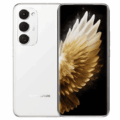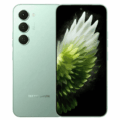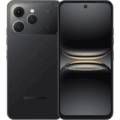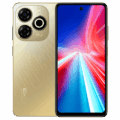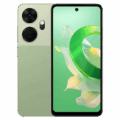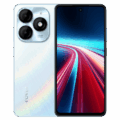– WHAT DO YOU WANT TO SEE? –
📘 Smartphone Specification Glossary – MyPhone.ng
Welcome to the MyPhone.ng Glossary. If you’re ever confused about terms like “SoC,” “PPI,” or “IP68,” you’re in the right place. This page gives you simple, straightforward meanings of the most common smartphone specification terms, especially useful when comparing devices or making purchase decisions.
📱 Display & Screen Terms
- Screen Size
The diagonal measurement of the screen, usually in inches (e.g., 6.5″). Bigger doesn’t always mean better; it depends on how you use your phone. - Resolution
The number of pixels on the screen (e.g., 1080 × 2400). Higher resolution means sharper images. - PPI (Pixels Per Inch)
Measures pixel density. The higher the PPI, the sharper the display looks. - Refresh Rate
Measured in Hz (e.g., 60Hz, 120Hz). It tells how often the screen refreshes per second. Higher refresh rate = smoother visuals. - Aspect Ratio
The shape of the screen (e.g., 20:9). It affects how wide or tall the phone looks. - Panel Type (IPS, AMOLED, OLED, etc.)
Refers to the screen technology. AMOLED and OLED offer deeper blacks and better contrast than IPS.
🧠 Performance Terms
- SoC (System on Chip)
The brain of the smartphone. It includes the CPU, GPU, and other components in one chip (e.g., Snapdragon 8 Gen 2, MediaTek Helio G99). - CPU (Central Processing Unit)
Handles most of the phone’s logic and operations. Measured in cores and GHz. - GPU (Graphics Processing Unit)
Takes care of rendering graphics, games, and videos. - RAM (Random Access Memory)
The phone’s short-term memory. More RAM helps your phone handle more tasks at once. - Storage (ROM)
Where your apps, photos, and files live. Usually listed as 64GB, 128GB, etc. Expandable storage refers to the ability to add a microSD card.
🔋 Battery & Charging Terms
- Battery Capacity
Measured in mAh (e.g., 5000mAh). Higher numbers generally mean longer battery life. - Charging Wattage (Fast Charging)
Higher watts = faster charging (e.g., 33W, 65W). Make sure your charger supports the same wattage. - USB Type-C / Micro-USB
USB Type-C is the newer, faster charging/data port. Micro-USB is outdated. - Wireless Charging
Allows charging without cables. Available only on some mid- and high-end phones.
📷 Camera Terms
- MP (Megapixels)
Measures the resolution of a camera. More MPs = more detail, but software and sensor quality matter too. - Aperture (f/1.8, f/2.0, etc.)
A lower number means better low-light performance. - OIS (Optical Image Stabilization)
Helps reduce blur in photos and videos by physically stabilizing the lens. - EIS (Electronic Image Stabilization)
Software-based stabilization for video. Not as effective as OIS. - Ultrawide / Macro / Depth Sensor / Telephoto
Different lens types for various shooting modes: wider views, close-ups, background blur, and zooming.
🌐 Connectivity Terms
- 4G LTE / 5G
Refers to network speeds. 5G is faster but not yet widespread in all areas in Nigeria. - Wi-Fi Bands (2.4GHz / 5GHz)
Dual-band Wi-Fi gives you better internet speed and stability. - Bluetooth Version
Newer versions (e.g., 5.0, 5.3) have faster speeds and better battery efficiency. - NFC (Near Field Communication)
Lets you tap your phone to pay or connect — not available on all budget phones. - Dual SIM / Hybrid SIM
Dual SIM allows two numbers. Hybrid means the second SIM slot shares space with the microSD card.
🛡 Durability & Build Terms
- IP Rating (e.g., IP67, IP68)
Water and dust protection. IP68 means fully dustproof and water-resistant up to a certain depth. - Gorilla Glass
Scratch-resistant glass made by Corning. Different generations offer different levels of toughness. - MIL-STD-810G / H
A military-grade certification for rugged phones that can survive drops, heat, shock, and water.
🔐 Security Features
- Fingerprint Sensor (Rear, Side, Under-display)
Location and type of fingerprint scanner. - Face Unlock
Uses your face to unlock the phone — can be 2D (less secure) or 3D (like Apple Face ID, more secure).
📦 Software & OS Terms
- Android Version (e.g., Android 13)
The software your phone runs. Newer versions have better features and security. - UI (User Interface)
The custom skin over Android (e.g., MIUI, One UI, HiOS). Affects how the phone looks and functions. - OTA Updates
Over-the-air updates that improve security, features, or fix bugs.
💬 Frequently Asked
Q: What’s the most important spec to consider?
A: It depends. For gaming, focus on the SoC and GPU. For long battery life, check mAh and charging speed. For photography, camera setup matters.
Q: What does ‘stock Android’ mean?
A: A clean version of Android with no bloatware or custom skins.
Q: Why are some phones with the same MP camera different in photo quality?
A: Sensor size, software optimization, and image processing all matter more than just megapixels.


